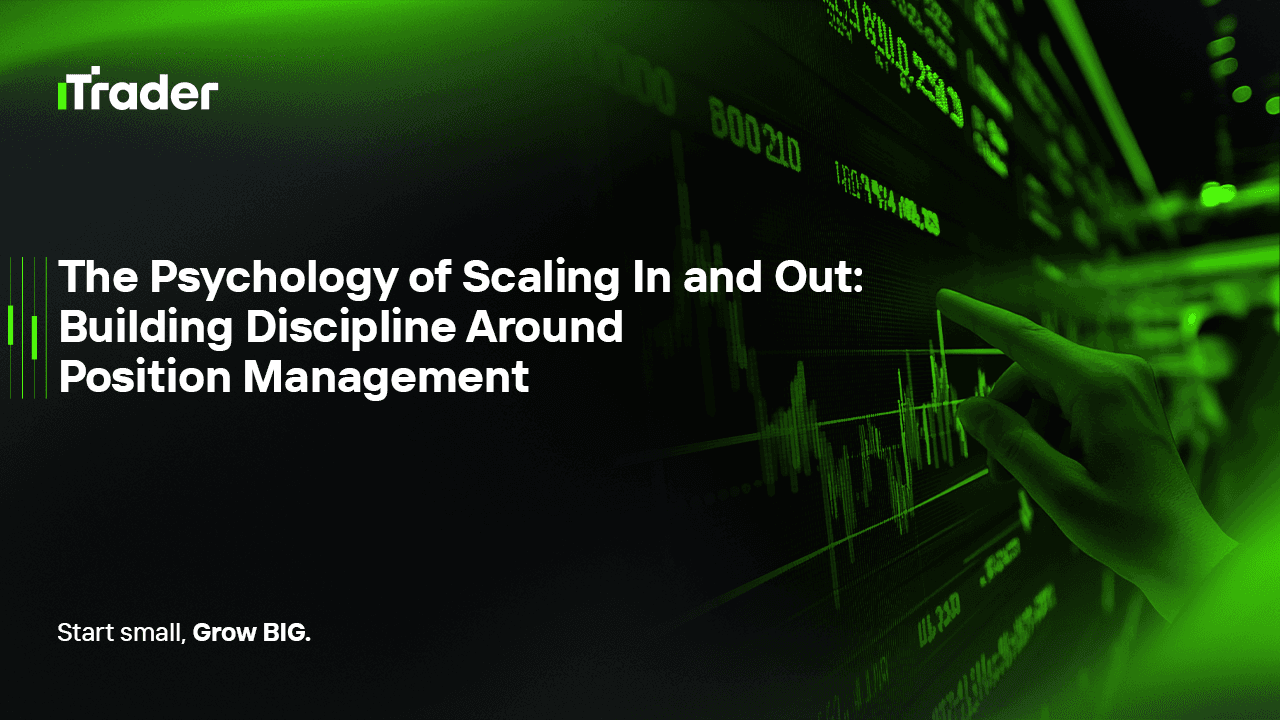2025-09-23
Ask any trader what matters most, and many will say “finding the perfect entry.” But if you’ve been trading forex long enough, you know the truth: the entry is only the beginning. The real battle starts after you’re in the trade.
This is where position management comes in. It’s the art—and discipline—of adjusting your exposure as the trade unfolds. Do you add more when the market is moving in your favor? Do you reduce size to protect profits? Or do you freeze, second-guess, and end up turning a good trade into a missed opportunity?

The answers lie in how well you apply two powerful techniques: scaling in and scaling out. Done right, they can transform your equity curve. Done wrong, they can sabotage even the best setups.
Let’s break them down, not just technically, but from the psychological perspective that often separates winning traders from inconsistent ones.
At its core, position management is about controlling your size, risk, and profit distribution as the market evolves.
Sounds simple, right? The reality is far from it. The mechanics are easy—the psychology is not. That’s why so many traders either misuse these tools or avoid them altogether.
Scaling in is about pressing your advantage. Instead of throwing all your capital in at once, you start small, and only increase size when the trade proves itself.
For example:
Greed creeps in fast here. Many traders confuse scaling in with averaging down—adding to losers in the hope of recovery. That’s not scaling in; that’s gambling. True scaling in happens only when you’re already ahead.
Another common pitfall: over-adding. A trade moves slightly in your favor and you pile in aggressively, only to get shaken out by a minor pullback. Discipline is what keeps scaling in a weapon, not a liability.
Scaling out is about reducing exposure as the trade matures. Instead of closing everything too early or holding everything too long, you strike a balance.
Example:
The danger with scaling out is doing it too early. If you close half the position for peanuts, you rob yourself of the trade’s true potential. On the flip side, refusing to scale out at all can mean watching a winning trade reverse and wipe out your gains.
The skill lies in defining clear rules: when, how much, and under what conditions to scale out. Without that framework, emotions take over.
The technical rules are easy to write down. The execution is another story.
Here’s what tends to go wrong:
To counter this, you need structure:
A trader buys EUR/USD with 1 lot, stop 50 pips. After +50 pips in profit, they add 0.5 lot. At +100 pips, they close the initial 1 lot, trail the remaining 0.5 lot, and secure a total of +3R.
The key? They only added after confirmation and managed risk carefully.
Another trader buys 1 lot. The trade drops 40 pips against them. Instead of taking the stop, they add another 1 lot to “average down.” When the stop hits, the loss is double what they planned.
That’s not position management—it’s emotional trading disguised as strategy.
Here’s how to bring discipline to scaling in and out:
Trading is a probability game. A single trade means nothing. What matters is how your equity curve looks after 100, 200, or 500 trades.
Scaling in and out, applied with discipline, smooths that equity curve. It reduces volatility in your results, protects you from emotional swings, and lets you compound gains more effectively.
The traders who succeed aren’t the ones who catch one big move—they’re the ones who stay in the game long enough for their edge to play out. Position management is what keeps you in the game.
Scaling in and scaling out are more than just trade management tactics. They are mirrors that reveal your psychology.
With clear rules and discipline, these tools transform you from reacting emotionally to trading with intent. They don’t just help you manage positions—they help you manage yourself.
That’s the real edge.
© 2025 iTrader Global Limited | 公司注册号 15962
iTrader Global Limited 位于科摩罗联盟安儒昂自治岛穆察姆杜 Hamchako,并受科摩罗证券委员会(Securities Commission of the Comoros)许可及监管。我们的牌照号为 L15962/ITGL。
iTrader Global Limited 以“iTrader”作为交易名称,获授权从事外汇交易业务。公司的标志、商标及网站均为 iTrader Global Limited 的专属财产。
风险提示: 差价合约(CFD)交易因杠杆作用存在高风险,可能导致资金快速亏损,并非适合所有投资者。
交易资金、差价合约及其他高杠杆产品需要具备专业知识。
研究显示,84.01% 使用杠杆的交易者会遭受亏损。请务必充分了解相关风险,并确认在交易前已做好承担资金损失的准备。
iTrader 特此声明,不会对任何个人或法人在杠杆交易中产生的风险、亏损或其他损失承担全部责任。
本网站提供的新闻及信息仅用于教育目的。用户应独立且审慎地作出金融决策。
限制条款: iTrader 不会向法律、法规或政策禁止此类活动的国家或地区居民提供本网站或相关服务。若您居住在限制使用本网站或服务的司法管辖区,您有责任确保遵守当地法律。iTrader 不保证其网站内容在所有司法管辖区均适用或合法。
iTrader Global Limited 不向以下国家/地区的公民提供服务,包括但不限于:美国、巴西、加拿大、以色列及伊朗。